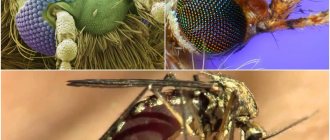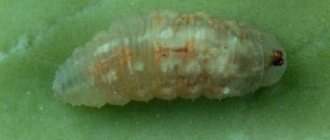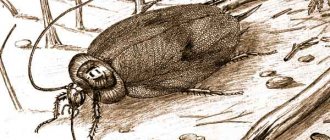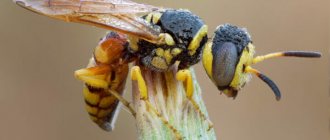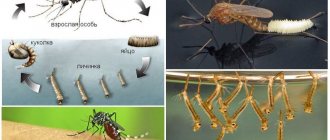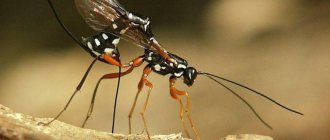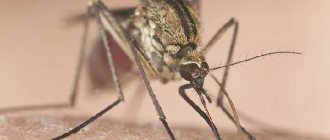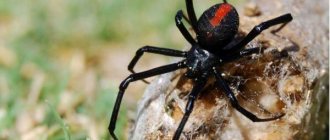Mole Spread
A mole is a mammal of the order of insectivores. The habitat of the common mole is very widespread . It can be found in almost all regions of the Russian Federation, Ukraine and Belarus.
It lives in dry meadows, forests with deciduous shrubs and birch trees.
most often found on forest edges , slopes of railway tracks, thawed areas, clearings, forest clearings and roads that are well lit by the sun .
It can cause irreparable damage to a garden in a country house, garden, greenhouses, parks, and arable land with cereal crops. The mole does not like continuous forest plantings of coniferous trees, hills with sandy soil, swampy areas, and floodplain meadows.
Does not like soil on which shrubs or trees with a powerful root system . It prefers humus black soil with moderate humidity .
In such soil you can find insects, larvae and worms. The chosen location depends on the temperature factor.
The stronger the temperature changes , the closer the animal gets to the forest.
Moving from the lowlands to the top, moles find the most favorable and sun-warmed habitats.
Important! If the ground freezes and crusts over in winter, the animal may become trapped. Moles often die in winter due to harsh weather and lack of food, since they are found only in the upper layers of the soil. At this time, earthworms and insects descend into the deepest soil horizons.
From a zoologist
Next door to my garage there is a bone carving workshop, where I regularly visit not only to admire the wonderful products of a familiar artist, but also from time to time to look at fresh finds of fossil bones. They are brought here mainly from the middle Kolyma and its tributaries (the Yasachnaya, Zyryanka, Ozhogin rivers, etc.), which is not the richest place in the North-East. But even here interesting discoveries occur. So this time, a bone-cutter neighbor called me into the workshop and, in some embarrassment, showed me some petrified little thing: “What kind of bone is this? They brought it from Zyryanka (a village in Kolyma).
The “bone”, about 6 cm long, looked like the hand of a small animal (Fig. 2). To prevent it from crumbling, it was generously filled with epoxy resin. It seemed that even soft tissues were preserved under the layer of resin. However, details, especially the structure of the joints, were difficult to discern. The animal’s paw is clearly specialized, as evidenced by the disproportionately developed elongated and slightly curved cones of the claws, more like fingers without joints. And they start somewhere deep in the hand. The x-ray of the paw, due to the fossilized general background, did not show where the claw is and where the phalanx is.
Rice. 2.
Back of the hand. A five-centimeter paw is a lot even for a fossil mole, but the mammoth was also big
Who did it belong to? Judging by the development of the claws and the ratio of the width and length of the hand, its analogue should be sought in modern burrowing animals - moles and zokors. Ours is very similar to the paw-shovel of moles (see Fig. 1). Very! Their paws are their only digging tool. Among the Tsokors, they are also adapted for digging, but the main tool is still huge incisors. The structure of the paws of different types of zokor (West Siberian, Altai, Transbaikal and Manchurian) varies somewhat (Fig. 3), so there is a choice for comparison. The range of the northernmost zokor, the Western Siberian, now extends along the Ob valley to almost 58° N. sh., while the last three species are not found north of the Shilka-Amur system. Therefore, there is nothing to say about the settlement of permafrost regions by any of the named species of zokor. And it is completely impossible to reconcile them with the Pleistocene permafrost and existence in a harsh climate that is difficult to imagine today.
Rice. 3.
The tsokor's paws do not look very much like the hand of a fossil mole, but for the sake of completeness they are also shown
However, this is about modern zokors. Most likely, this was the case in the Pleistocene. But analogies are dangerous: fossil species are not always close to modern ones. For example, a mammoth in morphology and physiology is very far from the Indian elephant, not to mention the African one, but fossil and modern bison, horse, musk ox, reindeer, Arctic ground squirrel, wolf, arctic fox, hare and many other species are very similar. Dozens of fossil and modern beetles are also indistinguishable. Therefore, the identity requirement is not necessary.
The given example of moles in the upper reaches of the Vilyui also calls for caution: the habitat of these voracious soil inhabitants in frozen areas is impossible to predict.
So, based on what has been said, most likely, what we have in front of us is the paw of a fossil “mammoth” mole. It is more natural to assume that he lived during one of the warm periods of the Pleistocene or even earlier, when conditions were not so harsh. And from the deposits of these periods, paleontological finds in northeast Asia are rare and therefore valuable.
I was not alone in my conclusion. My fellow zoologists determined the identity of the paw in the same way, or approximately this way. However, the last word, of course, belongs to paleontologists; this is their competence. Therefore, the “bone” went “for identification” to the second author of this message, a specialist in Pleistocene mammals. His conclusion was, to put it mildly, somewhat different.
Lifestyle
This mammal is a solitary animal. When meeting another male, a fight ensues, which lasts until the death of one of the moles . After this, it ends in cannibalism.
The mole leads an underground lifestyle throughout its entire life The diameter of the burrows is 4-6 cm. Residential passages lead from the main nest to a watering hole.
The source of water is rivers, puddles, drains, ponds, lakes, ditches, swamps. For hunting, the mole digs feeding tunnels. In 24 hours it can dig 10-20 m .
The nest is covered with forest moss or thick grass. The total length of the burrows is 1.0-1.5 km .
Photo
If you don’t know what a mole looks like, then a photo of the animal will clearly show you what it looks like:
Description of the animal
Its cylindrical, shortened, dense body helps it move through dug tunnels . It is slightly pointed at the front and rounded at the back.
The front part is much better developed. The animal has 6 main species and 11 different varieties. They differ in the structure of the jaw, skeleton, their weight, and size.
Young individuals differ from older mammals in the silvery hue of their skin. The mole has practically no neck. The head seems pulled into the shoulders.
The body smoothly touches the triangular shaped head . On the head there is a proboscis, along the edges of which there are vibrissae. Thanks to these sensitive hairs, the animal finds food.
The mole's forelimbs are wide, everted, and shaped like a spade . Initially the paws are silver-black. Over time they begin to fade.
There are 5 tightly pressed toes on the feet. They are connected by thin membranes. The claws are elongated, strong, slightly flattened. They reach 10 mm in length.
The hind feet are unwebbed, but with very sharp, elongated claws. The animal has 44 teeth , 2 of which are well-developed upper canines. In adult moles, the fangs are severely worn out.
The size of a male mole from proboscis to tail can reach 115-200 mm , females - from 105 to 145 mm.
The weight of males is 90-100 g, females - 60-80 g.
What do the eyes of different types of moles look like?
The mole family includes many different species and their visual organs are reduced to varying degrees.
Hidden under the skin
In such species, the eyelids are completely fused and do not open at all; with the help of their eyes they can only distinguish light from darkness, so we can assume that they are not developed. This group includes Mogers, Caucasian and Blind moles.
Hidden behind the moving eyelid
Species of moles that have movable eyelids are able to distinguish light from dark, distinguish between contrasting colors and the movement of other animals. The European, Townsend, American star-nosed and shrew moles can boast of similar ability to see.
The organs of vision are developed in the same way as in shrews
Only Chinese shrew moles have such vision, whose lifestyle is something between the terrestrial life of shrews and the underground life of moles.
Sense organs
The eyes are small, very poorly developed and almost completely covered with skin. The mole has no ears .
The auditory openings are also covered with skin. But the animal’s hearing is remarkably developed.
Which sense organs are better developed in a mole? The frequency sound conductivity of the soil is available to him . The sense of smell is well developed. By smell, he finds food in the ground.
Tactile hairs are distributed throughout the body. Thanks to them, he senses worms located 50-70 cm from him .
Also an integral part is a 2-centimeter tail, which is covered with hairs. When the mole lifts its tail up, it feels the ceiling of the dug tunnel . If he does not feel the ground, he returns to his hole.
Nutrition
The mammal feeds only on animal food . The main food is earthworms and small insects and vertebrates.
Help: In the wild, moles can feed on mice, rats, frogs, and ants.
The metabolism of this mammal is very fast. Therefore, the mole has to absorb a lot of food . During the day, the animal eats food equal to its own weight. To live, males need 145 grams of food, females – 80 grams.
If the animal is hungry, it can eat on the surface of the soil. But in most cases, moles take their prey into dug holes . The animal's stomach can hold 20 grams of food.
In 30 minutes, a mammal can eat 35-45 grams of earthworms. After 5-6 hours, the mole eats the same amount of food. After this, he goes into hibernation for 3-4 hours , after which the search for food begins again.
Important! Plant food is not food for moles. If plant particles get inside, they end up there randomly or from the digestive tract of earthworms.
Several factors influence how many years a mole lives:
- Diseases and attacks of pests and insects;
- Living conditions, temperature changes, soil freezing;
- Meeting with enemies - fox, marten, eagle owl;
- Cannibalism between one subspecies;
- Nutrition, hunger strike, food shortage.
How long does the common mole live under favorable conditions? The average lifespan of an animal is 4-7 years.
Find out in our articles what harm the mole causes to the farm and methods of combating it.
The mole is an insectivorous animal. The life of a mole passes in holes on the edges of the forest, in garden plots, clearings and roads. The weight reaches 100 grams.
During the day he eats food equal to his own weight. It hides its nests from people, predators and other males. Under good conditions it can live 7 years .
Reproduction and lifespan
Moles are solitary animals; they pair up only during the breeding season to procreate. By the age of one year, moles reach sexual maturity.
The breeding season occurs once a year in early spring. The female prepares the nest alone for the brood; the male does not participate in this.
Forty days after conception, small, completely hairless cubs are born. There are usually about five of them in a litter, less often it reaches 8-9 individuals.
In the photo there are baby moles
For a month, the offspring stay with the female, who brings them food and cares for her children. Subsequently, the young leave the female’s burrow and begin to build their own home. If the young brood does not leave the nest, then the female may even bite it, thereby driving it into independent adulthood.

